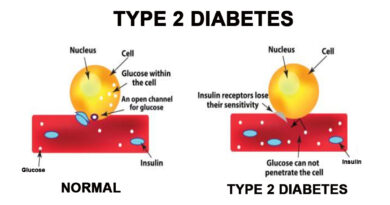Weight Loss And Type 2 Diabetes
If you’ve recently been diagnosed with Type 2 diabetes, your doctor has probably been talking to you about weight loss. Excessive weight can contribute to Type 2 diabetes and complications from it, so keeping weight off is important and losing some of that weight can even help for you to shake the diabetes.
Once you have diabetes, however, it changes the way that your body handles energy so it can change the way that losing weight works. You should really be talking to your doctor about losing weight and managing your Type 2 diabetes, but this article will offer a brief introduction to some key things that you should consider as you move forward.
Fighting Through Plateaus
Type 2 Diabetes may lend a sense of urgency to your weight loss. Enthusiasm is good, but patience may be more important. Just like losing weight without Type 2, losing weight with Type 2 takes time.
Having a grand end-goal for yourself is great, but you’re more likely to be able to stick to the plan long term by setting short-term goals for yourself. Each time that you complete a goal, set another one that’s maybe a little more industrious.
Patience is also important because people with diabetes tend to “plateau.” This is a term for when weight loss begins but then weight stabilizes despite continuing diet and exercise at the same level of intensity. Most people begin to lose weight again within a year, so it’s important not to lose hope.
Incorporating Diet And Exercise
Type 2 diabetes changes how your body processes energy. Because of this, carbs – a molecule that your body breaks down for energy – become really important. While you do need to pay attention to carbs to manage your diabetes, this puts an unfortunate amount of emphasis on food.
Also like losing weight before diabetes, you need to balance diet with exercise for faster and more sustainable weight loss with diabetes.
Working Through Side Effects And Symptoms
So far this article has focused on how weight loss with Type 2 diabetes is similar to weight loss without Type 2 diabetes. Unfortunately, people with Type 2 diabetes face additional obstacles that people without diabetes do not face on the quest for weight loss.
For one thing, some antidiabetic medications can actually cause weight gain. Because of this the diabetic attempting to lose weight must not only work against their own body and their own poor health habits, but also against side effects from medications that are supposed to be keeping their condition from worsening.
Further, people with more advanced stages of diabetes often have nerve death and sometimes tissue damage, especially in the extremities often including the feet. This can make it even more difficult for people with Type 2 diabetes to maintain the level of activity that may be necessary for weight loss.
How to lose weight when you live with diabetes
Successful Weight Loss In Five Easy Steps
What Can You Eat If You Have Diabetes
Balancing Blood Sugar
Finally, because diabetes makes it difficult for the body to control its energy levels, people with diabetes need to be careful exercising, especially while dieting.
The body burns sugar for energy, which is circulated in the blood. Usually, Type 2 diabetics have high blood sugar, which can cause many of the issues associated with the disease. This is also why diet is important for Type 2 diabetics.
During intense exercise, the body consumes energy. Because diabetes changes how your body deals with energy, they are more likely than other people to deplete the sugar in their blood during exercise, especially if they have been limiting their carbohydrate intake. Low blood sugar can be very dangerous, so keeping it in balance is another complication of weight loss that the diabetic must handle well in order to lose weight safely.
It may seem like losing weight with Type 2 diabetes is an up-hill battle. Indeed, in many ways it is. While this is unfortunate, it is important to achieve and maintain a healthy weight in order to avoid many of the more dangerous complications of the condition.




